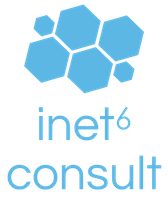
|

|

|
|
Home ·
BGP Expert Test ·
What is BGP? ·
BGP Vendors ·
Links ·
Archives ·
Books ·
My New BGP Book | ||
 (advertisement)
(advertisement)
| ||
|
ISPs putting customers behind NAT (posted 2005-04-23)
Because some IETF documents such as RFC 3489 and draft-ietf-sipping-nat-scenarios-00.txt talk about ISPs putting their customers behind a Network Address Translation device, Philip Matthews posed the question to the NANOG list about how wide spread this practice is. Some people followed up with examples. Most of these are for things such as GPRS and 802.11, but there are also a few ISPs that do this for "regular" services such as DSL. According to Philip in a summarization of private replies: "It seems that there are quite a few providers who do this. I was told of at least 24 providers in the U.S., as well as providers in Canada, in Central America, in Europe, and in Africa which which do this." Unfortunately, there is little or no information why service providers do this except for examples where small ISPs are unable to get enough addresses or get their own address block routed from a large incumbent telco/ISP in non-deregulated markets. In the IETF, NAT has a bad reputation because it breaks many protocols and because it's hard (if possible at all) to run services on NATed systems. Users who run their own NAT device (which is probably the majority of all "always-on" IP users) can configure their NAT to allow certain incoming traffic, but this won't work with service provider NAT because a single port number must be shared across several customers.
|
